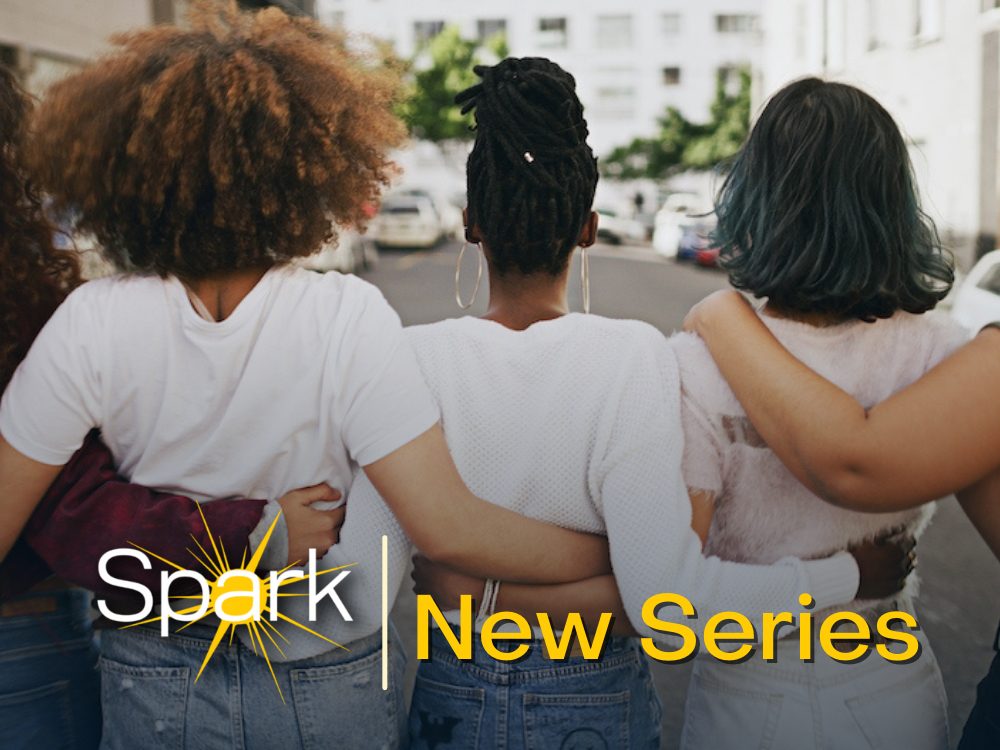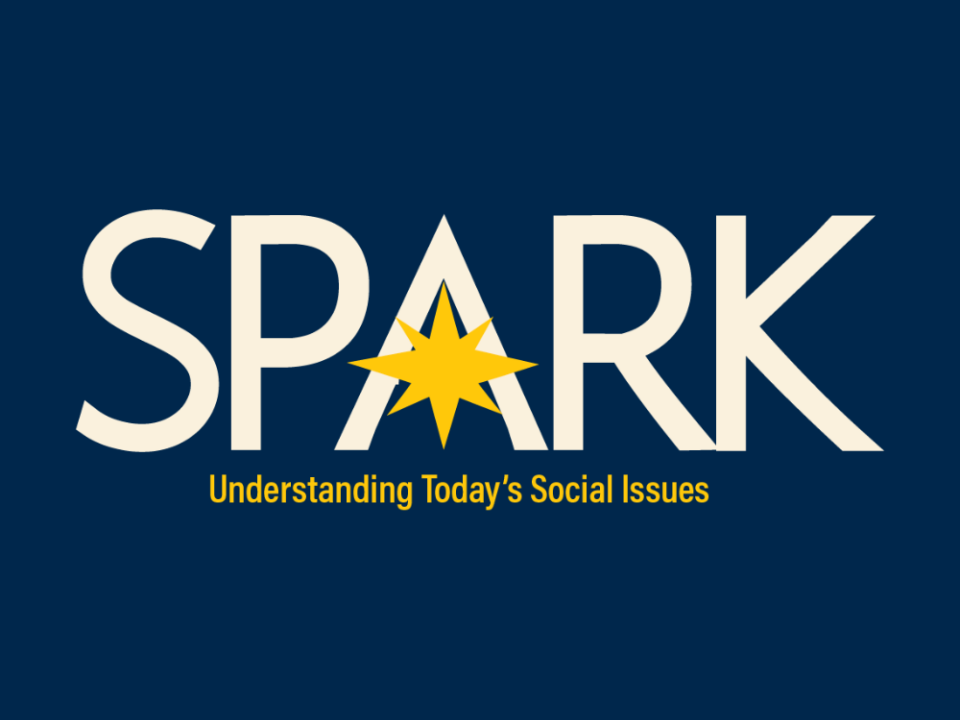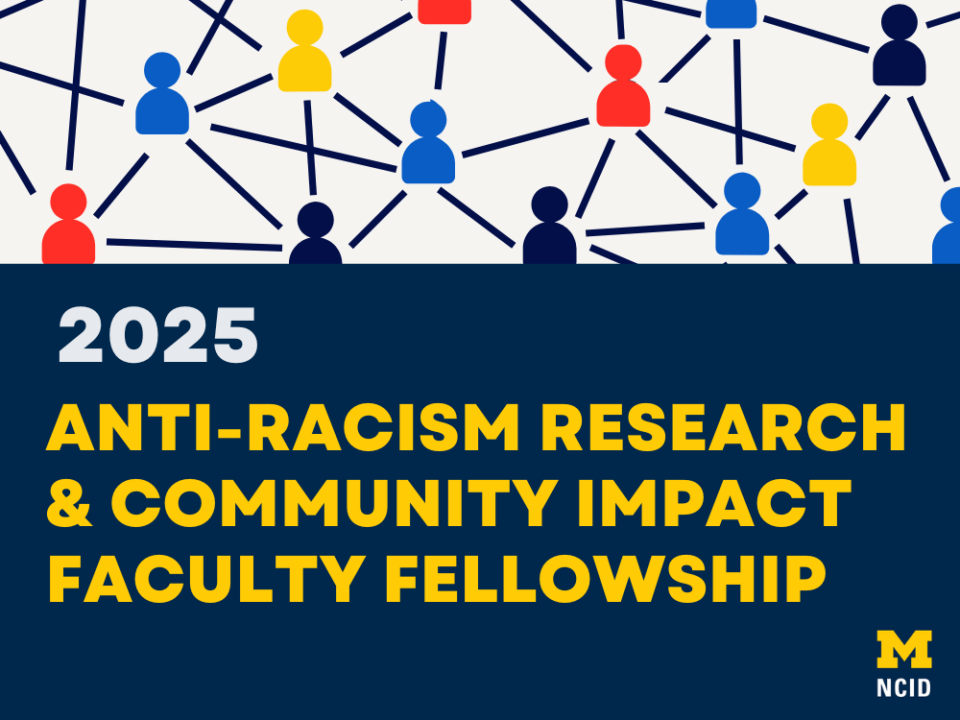- About
- News
- Events
- Initiatives
- Anti-Racism Collaborative
- Change Agents Shaping Campus Diversity and Equity (CASCaDE)
- Diversity Scholars Network
- Inclusive History Project
- James S. Jackson Distinguished Career Award for Diversity Scholarship
- LSA Collegiate Fellowship Program
- University Diversity & Social Transformation Professorship
- Publications & Resources
- About
- News
- Events
- Initiatives
- Anti-Racism Collaborative
- Change Agents Shaping Campus Diversity and Equity (CASCaDE)
- Diversity Scholars Network
- Inclusive History Project
- James S. Jackson Distinguished Career Award for Diversity Scholarship
- LSA Collegiate Fellowship Program
- University Diversity & Social Transformation Professorship
- Publications & Resources

NCID director Tabbye Chavous appointed University of Michigan vice provost for equity & inclusion and chief diversity officer
May 20, 2022
“Environmental Racism and Justice”
June 5, 2022“Understanding Sexual Harassment through an Anti-Racist Lens”
When I was a student I was sexually harassed by one of the few Black professors at my predominantly White university. I was assisting a faculty member whose office was close to his, and when he found me alone in a hallway or a common area, he would smile and comment suggestively on my appearance, my hair or my body. At the time I felt that he knew this would stay between us because, like him, I was one of the few Black people working in the building. I believed that any complaint I made against him would confirm some people’s stereotypes of Black men. And so my silence was assured and with each of his remarks I felt complicit in my own victimization. Many years later, as I sit at my computer hesitating to write this, I feel it still.

My #metoo story, at the intersection of gender and race, illustrates some of the complexities of how women of color experience sexual harassment. Yet efforts to end harassment based on sex, sexuality, and gender have often operated separately from the fight to address systemic racism. In response to this problem, scholar-activists have established frameworks to understand how these systems support and maintain each other, and they have organized to develop solutions to remediate inequity and harm stemming from the intersections of racist and misogynistic cultures, policies, and practices.
One of the best known first appeared in 1989, when legal scholar and critical race theorist Kimberle Crenshaw published an article addressing a strange gap in antidiscrimination law. Although laws existed to prohibit employment discrimination based on race, and other laws prohibited discrimination on the basis of gender, in practice Black women who experienced discrimination were sometimes unable to find a remedy in the courts because they were viewed by law as imperfect representatives of either protected class. Because of their intersectionality, Black women plaintiffs were vulnerable to unfair treatment based on race, gender, as well as their combination (e.g., racialized sexual harassment), even as they found themselves outside the protection of laws designed to recognize and prohibit inequitable treatment based on a single category. Brittney Cooper cogently described intersectionality as “[advancing] the idea that systems of oppression—namely, racism, classism, sexism, and heterosexism—worked together to create a set of social conditions under which [B]lack women and other women of color lived and labored, always in a kind of invisible but ever-present social jeopardy.” An intersectionality lens helps make visible the distinctive ways that people of color, as they move through the world, make decisions about how they will operate in a complex society rooted in both systemic racism and sexism.
The essays in this Spark series explore harassment on the basis of sex and/or gender through an anti-racist lens to better understand the challenges and complexities of these experiences and offer informed solutions. Together they address the experiences of diverse women, yet they share some cross-cutting themes. The contributions describe how harassers exoticize women of color and mobilize sexual stereotypes to justify their behavior. They explain how specific labor policies and practices – labor market segregation, at-will employment, forced arbitration, and an emphasis on reporting – create and exacerbate conditions that foster harassment and limit women’s opportunities for redress. They raise questions about what happens when the authorities are the harassers, whether they are financial aid officers or police. And in contrast to common approaches to curbing sexual harassment though intervention at the individual level (e.g., training, encouraging reporting) the contributors call for structural solutions, such as increased representation for women of color among lawmakers and judges, and a cultural shift toward communal responsibility for harassment prevention.
And most poignantly, these contributions give voice to the cumulative harm to women of color that can result from these experiences: the clear message that they don’t belong in their schools and workplaces, and that authorities don’t consider their victimization as worth addressing. In my case, although I chose not to report the harassment I experienced, I was fortunate to have the support of other faculty who let me know they valued me as a scholar and a person. If you or someone you know is experiencing sexual harassment, I encourage you to seek information and resources that will help you to make an informed decision about reporting.




